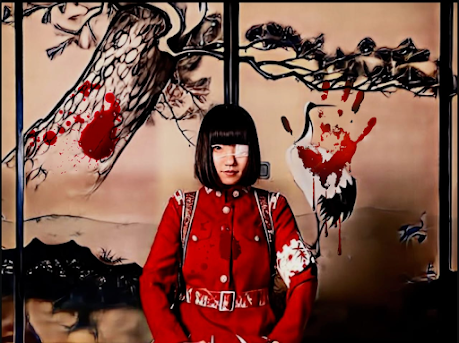Japan's Red Light District in the Edo Period: A Glimpse into the Past
The Edo period in Japan, spanning from the early 17th century to the mid-19th century, was a time of cultural transformation and social shifts. One aspect that draws both historical enthusiasts and curious minds is the intriguing history of Japan's red light district during this era. Delving into the past allows us to understand the complexities and dynamics of society, offering us a glimpse into a world that existed centuries ago.
Unveiling the Red Light District
The Flourishing Pleasure Quarters
Edo, now known as Tokyo, was the epicenter of this era's red light district phenomenon. Within the city, the "pleasure quarters" or "yūkaku" emerged as bustling hubs of entertainment, pleasure, and cultural exchange. These districts were home to the iconic "oiran," high-ranking courtesans who were skilled in various arts, including dance, music, and poetry.
Social Hierarchy and Courtesans
The courtesans of the Edo period held a unique position in society. While they were objects of desire and fantasy, they also became influential figures who shaped trends in fashion, culture, and even politics. Courtesans were meticulously trained in conversation and the arts, making them highly sought after companions for intellectual exchange.
Beyond the Surface
While the red light district might evoke images of opulence and extravagance, it's crucial to recognize that life within these quarters was far more complex. Many women entered the profession due to poverty, limited opportunities, or familial circumstances. As much as these districts were centers of pleasure, they were also places of struggle and sacrifice.
Cultural Impact
The World of Arts
The red light district was a melting pot of artistic innovation. Kabuki theater, for instance, found its roots in these districts. The performers, often male, would take inspiration from the courtesans' refined manners and sophisticated aesthetics. Over time, kabuki evolved into a distinct form of theater that continues to captivate audiences to this day.
Ukiyo-e: Art for the Masses
The Edo period also witnessed the rise of "ukiyo-e," a genre of woodblock prints that depicted scenes from everyday life, including those of the red light district. These prints offered a glimpse into the lives of courtesans, actors, and commoners alike, shaping popular culture and influencing artistic movements worldwide.
Legacy and Modern Perspective
Preservation and Remembrance
Today, remnants of the red light district's cultural impact can be found in various forms. Historic sites, museums, and even traditional festivals pay homage to the women who once populated these districts. These efforts ensure that the stories and contributions of these women are not forgotten.
Lessons from History
Exploring the red light district of the Edo period teaches us valuable lessons about societal dynamics, gender roles, and the intersection of culture and commerce. By studying this history, we gain insight into the struggles and triumphs of individuals who navigated a society undergoing profound change.
Conclusion
The red light district of the Edo period is a chapter in Japan's history that offers a rich tapestry of stories, emotions, and cultural exchanges. It wasn't merely a place of pleasure; it was a microcosm of a society in transition. The courtesans, the artists, and the inhabitants of these districts have left an indelible mark on Japanese culture, reminding us that even in the most unexpected places, profound stories are waiting to be unearthed.




Comments
Post a Comment